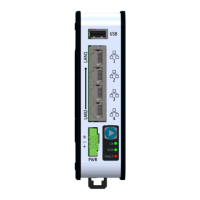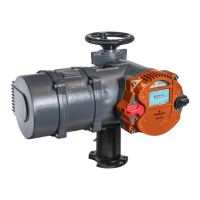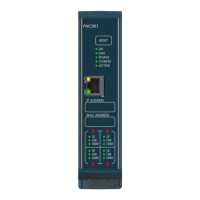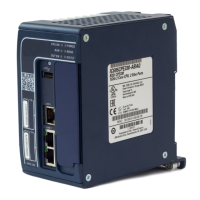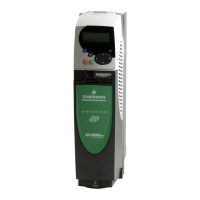ROC800-Series Instruction Manual
Revised July-2017 General Information 1-13
database point to be one of the possible types of points available to the
system.
Together, these three components—the type (T), the logical (L), and the
parameters (P)—can be used to identify specific pieces of data that
reside in a ROC800’s data base. Collectively, this three-component
address is often called a “TLP.”
The Input/Output database contains the input and output points the
operating system firmware supports, including the System Analog
Inputs, Multi-Variable Sensor (MVS) inputs, and Input/Output (I/O)
modules. The firmware automatically determines the point type and
point number location of each installed I/O module. It then assigns
each input and output to a point in the database and includes user-
defined configuration parameters for assigning values, statuses, or
identifiers. The firmware scans each input, placing the values into the
respective database point. These values are available for display and
historical archiving.
Spontaneous-Report-by-Exception (SRBX or RBX) communication
allows the ROC800 to monitor for alarm conditions and, upon
detecting an alarm, automatically reports the alarm to a host computer.
Any kind of communications link—dial-up modem or serial line—can
perform SRBX as long as the host is set up to receive field-initiated
calls.
The firmware supports both the ROC Plus protocol and the Modbus
master and slave protocol. ROC Plus protocol can support serial
communications and radio or telephone modem communications to
local or remote devices, such as a host computer.
The firmware also supports the ROC Plus protocol over TCP/IP on the
Ethernet port. The ROC Plus protocol is similar to the ROC
300/400/500 protocol, since it used many of the same opcodes.
For more specific information refer to the ROC Plus Protocol
Specifications Manual (part D301180X012) or the ROC800L Protocol
Specifications Manual (part D301659X012), or contact your local sales
representative.
The ROC800-Series firmware also supports Modbus protocol as either
master or slave device using Remote Terminal Unit (RTU) or American
Standard Code for Information Interchange (ASCII) modes. This allows
you to easily integrate the ROC800 into other systems. Extensions to the
Modbus protocol allow the retrieval of history, event, and alarm data in
Electronic Flow Metering (EFM) Measurement applications.
Note: In Ethernet mode, the firmware supports Modbus both in master
and slave mode.
The Ethernet port supports up to six ROC Plus connections, six
Modbus Slave connections, and one Modbus Master connection
all at the same time.
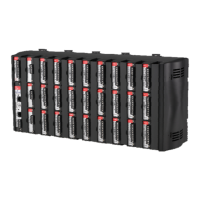
